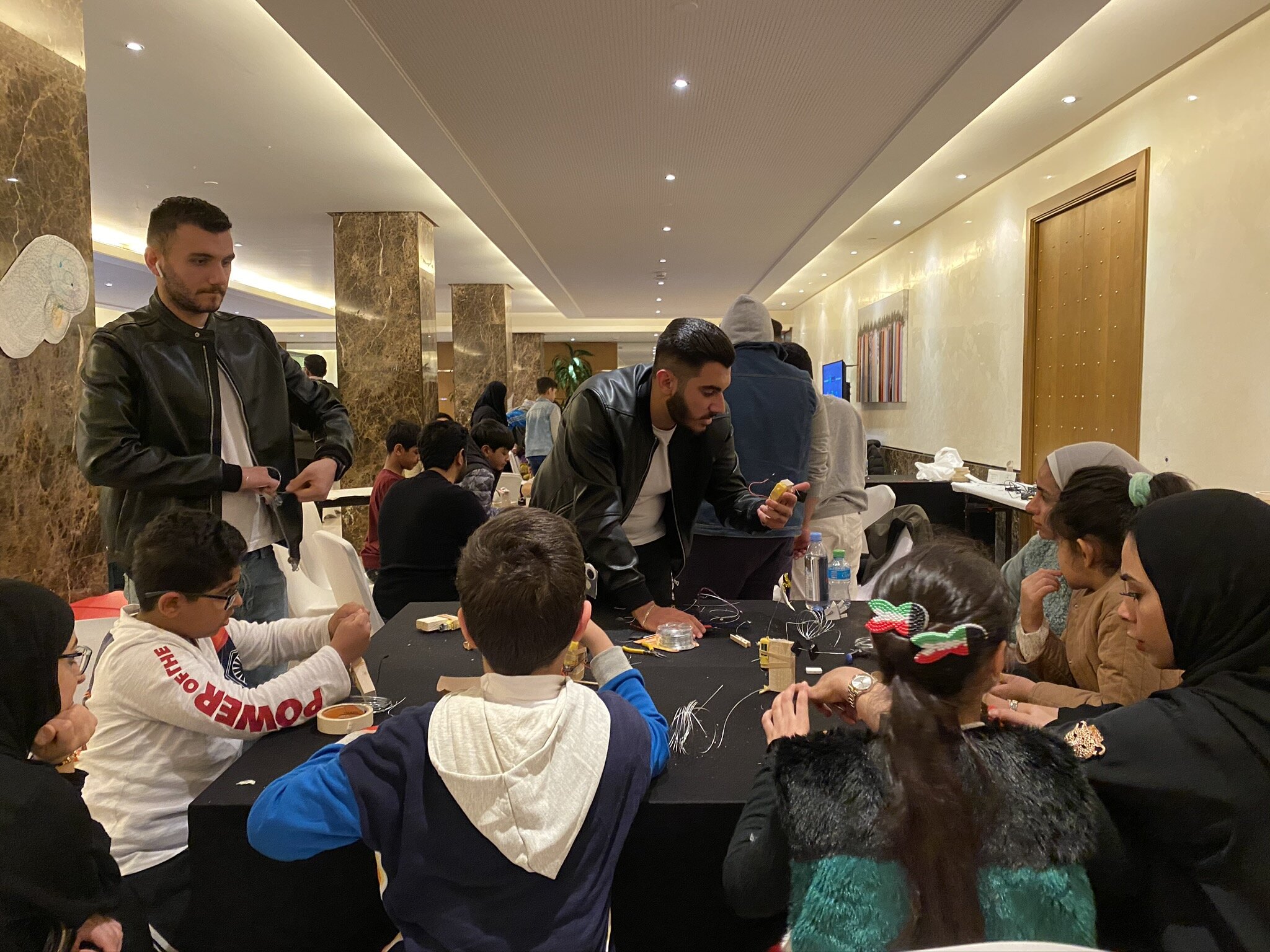Kuwait Robotics and AI Festival Tinkering
This past week I traveled to Kuwait to lead hands-on workshops for an AI and Robotics festival sponsored by KFAS and 1001 Inventions. The week-long event was really popular with school field trips and family groups who spent the time learning about high-tech robots and exploring several programming, electronics and robotics activities. I was excited to share project prompts that incorporated familiar materials and emphasized the artistic elements.
The first workshop that I set up for the workshop was an art machines remix powered by Micro:bit and continuous servo motors. Using the new glowforge laser cutter at the Maker Ed Community Studio, I cut out bodies for the machines and attached a continuous servo motor, two clothespins to hold the markers, and a space for the micro:bit and LiPo battery. As well I added some super huge googley eyes to cutify the bot!
Taking a page from the motion boards project that I worked on with Lodestar school last year I also used the laser cutter to make different shaped hubs and hot glued the pieces to the plastic servo horns. These simple hubs gave people the chance to quickly experiment with creating different motions and patterns.
The second workshop idea for the festival was a motorized wood/wire automata activity. I experimented a bit with programmable cranky contraptions during my residency at Amazeum last year and thought that we could simplify the set up so that participants could power their machines with a AA battery.
After arriving onsite in Kuwait, I worked to convert the standard hotel ballroom space into a makeshift tinkering studio. I made a space for cutting/drilling, a table for hot glue, a section for the materials and two separate areas for art machines and motorized automata.
Although I brought a lot of the supplies in my suitcases, the one thing that we had to do onsite was prepare the wood blocks for the automata by cutting down 1x2 boards, drilling a big hole and a small hole for the motor/wire connection.
Before the workshops started, I also met the group of facilitators that I would be working with during the week. We tried the activities and together and thought about the best way to set up the space. Although they were new to working with kids, I appreciated their curiosity and willingness to jump in and try out new ideas.
On the first day of the festival, so many people came to the booth that it really overwhelmed our motorized automata session. Initially we thought to have a more open flexible space, but after the high energy of the opening day we knew we had to rearrange the environment to be more closed and offer the workshop only at specific times.
The next day was also the first round of field trips, who would be the main visitors to the space in the mornings for the rest of the festival. This was also a bit of a challenge because the groups were only able to spend about 10-15 minutes testing out an activity.
But even with the time constraints it was really fun to see young kids testing out the programmed art robots. They got excited about changing the shape of the wheels and the colors of the markers. As well they got the chance to see and talk about some of the more complex ideas like numbered pins, sensors and bluetooth connections.
Over the course of the week we experimented with remote controlled bots and adding more markers to the contraptions, creating more complex patterns.
After the morning sessions we took a midday break and re-opened for motorized automata workshops each day from 5:00 to 9:00. Each session we could have about 16 people working with us and it was really cool to see some of the ideas that they all came up with.
There was a lot of iterating and fine tuning with round nose pliers to get these crank slider mechanisms working properly and kids and adults were really proud of their creations.
I really liked how some people created their own challenge like making sound-based machine or turning the block on its side and making it crawl around the table.
For these hands on activities we thought it was important to add a measure of playfulness, humor and just general weirdness to open up the number of people who are connected to robots. I was thrilled with the sheer number of projects that made us smile and laugh.
The festival was a big success with over 8,000 people coming through the doors over the week-long program. It was exciting for me to share some workshops that used simple materials, focused on tool use and basic mechanisms, and allowed kids and adults to tell personally meaningful stories.
I’m excited to continue to explore these ideas for upcoming conferences, camps and events. And stay tuned for more detailed guide on how to build on instructables soon.













